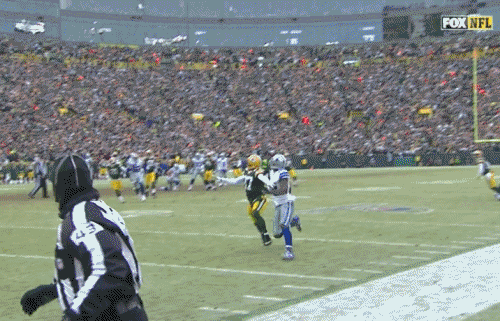Tuck rule play: JetsNortheasternPJ said:I'm just surprised it's being discussed as much as it is. A play like this happens constantly in the NFL and it's always incomplete. Because it was 4th down in a playoff game doesn't mean anyone got screwed. It's like the Tuck Rule. The Pats had the Tuck Rule called against them earlier that season (Miami?)
Outside of the "the rule sucks it needs to be changed" there's really no discussion here outside of "Dez Bryant should know better, secure the catch since it'd be 1st and goal on the 1 or 2 with 3 minutes left"
Dez should know #1 priority is to catch the ball, secure the ball and make sure it's caught. Whether he did reach /didn't reach is a matter of interpretation. He's a veteran receiver and knows better and on 4th down it's his responsibility to catch the ball, not try to get a TD out of it.
I can't believe i'm going to say this but I was watching Cris Carter on First Take (I was at the gym with no other channels covering football) and his take was if you are in a warm weather situation or a dome, you do what Dez did, if it's freezing and you're going to the ground on a 4th down play you catch the damn ball and worry about anything else later. I'm not a fan of Cris Carter the TV personality but as someone who played a ton, outside of him say he should have "Catched the ball!" I agree. Get the reception. go down at the 1 and leave nothing up to the NF
Dez not securing the ball: That's a sign of professional maturity versus an elite (top 5 at his position) athlete doing his best to impact a game. I think I prefer sports encouraging extraordinary efforts rather than legislating caution into their play.

